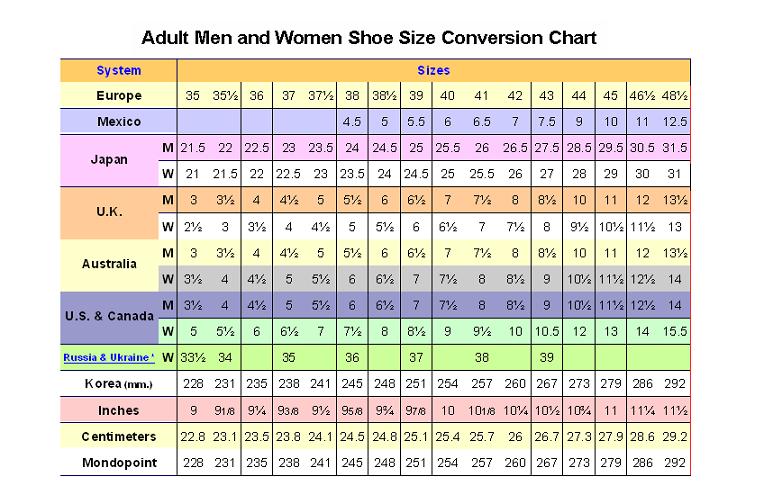Shoes
Sizing and Fit Tips
Considerations when purchasing a shoe:
• Establish a relationship with a specialty retail shoe store or a reputable on-line shoe retailer who has a reliable shoe return policy if your shoe does not fit well or meet your needs.
• The shoe is a very important part of your clothing apparel. Many of the clothes that we wear can last for a long period of time. Shoes however that are often made out of foam materials for the provision of cushioning have a limited life span. It is important to replace the shoes every six months to one year, based on the material construction of the shoe.
• Size the shoes by the use of the Brannock device rather than suggesting to the shoe salesperson what size you are. Each shoe last or model can be different from shoe manufacturer to shoe manufacturer.
• Just because you measure a certain size, does not mean you will be that size in all shoes. Shoe sizes vary depending on manufacturer/style and you may need to go up or down a half size, sometimes even a full size.
• Make sure that you measure both feet and fit the shoe to your longest foot.
• Shop for shoes toward the end of the day because your feet will swell more at the end of the day.
• During your shoe fit make sure that you have the width of your thumb between the end of your longest toe or the equivalent of 3/8” to ½” to the end of your toe.
• You should be able to pinch the shoe material at the top of your foot to make sure that there is adequate room from side to side.
• While standing, you should be able to pinch the material at the widest part of the shoe – if you do not gather any material, the shoe is too narrow- if you gather material that is greater than the circumference of a pencil, the shoe is too wide.
• The ball of your foot should feel comfortable within the forefoot region of your shoe. Never buy a shoe if the sole is narrower than your forefoot.
• Your heel should fit well in the back of the shoe with minimal slippage during walking. Key word is "too" tight. A snug fit is best (mainly in the back 3/4 of the shoe). If a new shoe is leather and it is not snug when you purchase it, as it does stretch the shoe will become too loose causing your foot to slide (shear) front to back and/or side to side, which will contribute to foot fatigue and lead to discomfort.
• Make sure that the shoe feels comfortable on your feet when you try them on. Wear them on your home carpet for a while to make sure the shoes remain comfortable.
• If your shoe feels too snug then don’t expect them to stretch out over time. There should be very little “break in” if a shoe is well fit.
• Your foot will lengthen with age so make sure that you always measure your feet during the shoe purchase and find shoes that contour well to the shape of your feet.
• If you wear orthotics it is best to purchase a shoe with a removable liner to accommodate your orthotic device.
• When shoes are new they are stiff, particularly at the break or flex point – a minimal amount of heel slippage occurs with new shoes, because your foot is flexing during the propulsion phase of gait, but the shoe is not. As the shoe is worn it will become more flexible and the heel will not slip as much. I always recommend that you flex the shoe 5-10 times at the break point before trying it on to limit heel slippage. You should never buy a shoe if there is a gap between your heel/ankle and the heel counter of the shoe.
Schedule an Appointment

Please call 805.543.7788 for San Luis Obispo, 805.434.2009 for Templeton, or email us to request an appointment.
